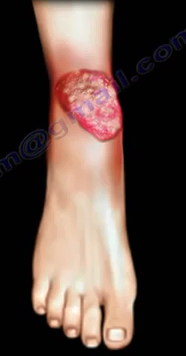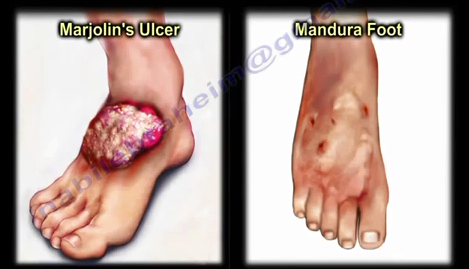There are three general causes of running related injuries: anatomic factors, shoes and running surface, and training errors.

Anatomical Factors
There are many different anatomical factors that may cause running injuries including leg length discrepancies, femoral neck anteversion, asymmetrical muscle inflexibility or weakness, genu valgum, genu varum, genu recurvatum, excessive Q angle, patella alta, tibial torsion, tibial varus, lower leg-heel or heel- forefoot malalignment, pes cavus or planus, structural toe abnormalities and bunions.
Leg length discrepancies are a variation in limb length may be causes by a previous injury to a bone in the leg or arthritis.

A femoral neck anteversion is a developmental abnormality causing abnormal rotation of the femoral neck. With femoral neck anteversion, the femoral neck tilts forward in respect to the rest of the femur causing the lower extremity to rotate internally. Too much femoral anteversion and the toes will turn in.

Asymmetrical muscle inflexibility or weakness is a condition that distributes abnormal and uneven forces to the body creating uneven stresses across the muscle groups and joints.

Genu valgum is also known as “knock knee”. Genu Varum is known as “bow leg”. Genu recurvatum is a deformity in the knee joint where the knee bends backwards at the tibiofemoral joint.
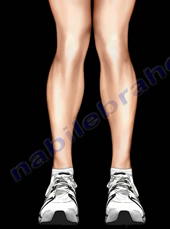
An excessive Q angle is one that is greater than 15°. The presence of an excessive Q angle causes the knee cap to track out of alignment and degeneration of the cartilage behind the knee cap will occur due to increases stresses resulting in pain around the knee cap.
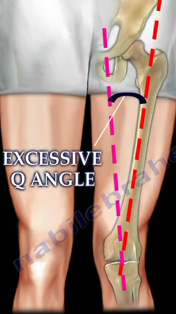
Patella Alta occurs when the knee cap is in an “alta” position; it sits above the trochlear groove and is less stable. The patella tendon that connects the knee cap to the tibia is longer than normal.
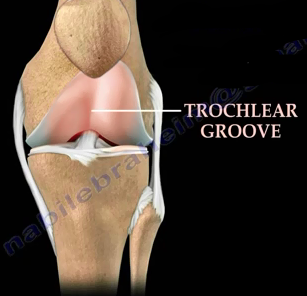
Tibial Torsion is the inward twisting of the tibia causing the feet to turn inward. This is commonly referred to as having a “pigeon-toed” appearance. Tibial varus is a curvature of the tibia inwards from the proximal to distal end. It causes problems of the structures around the knee.

Lower leg – heel or heel – forefoot malalignment causes distortions in the knee that may causes the lower leg bones to be off center on the heel of the foot.
Pes cavus is a high arch that is raised more than normal and distinctly hollowing during weight bearing.

Pes Planus is a common deformity in adults that is also known as “flat foot”. The entire sole of the foot will come into complete or nearly complete contact with the ground.

Structural Toe Abnormalities such as Morton’s neuroma. Morton’s neuroma is an enlargement and inflammation of a portion of the plantar digital nerve. It is usually located in the third web space between the metatarsal heads which is felt in the front of the foot, extending to the toes.
Bunions (hallux valgus) can be a big problem with shoe wear.
Shoes and Running Surface
Wearing the proper shoes that are comfortable and provide shock absorbency is important. Old, worn out, uncomfortable shoes may cause running injuries. Attention should be given to the climate surface and terrain to avoid running related injuries.
Training Errors
Consideration should be given to using the appropriate equipment and the progression of workouts in order to avoid injuries. Common training mistakes include wearing the wrong clothing/shoes, not drinking enough fluids, bad body form, and lack of preparation.
The most common running problems are over striding and too much running.

